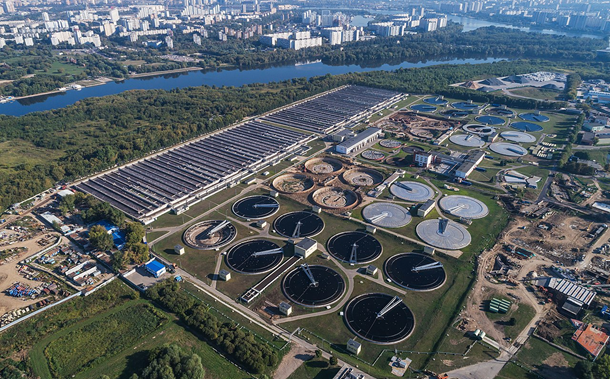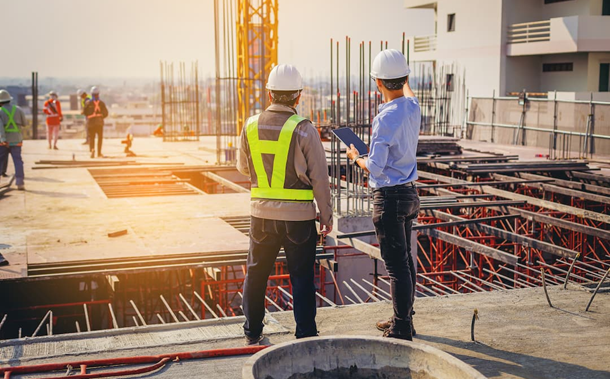Development and Validation of a Seismic Index for Assessing the Vulnerability of Low-Rise RC Buildings
Downloads
Doi:10.28991/CEJ-2025-011-03-016
Full Text:PDF
Downloads
[2] Ismail, N., & Khattak, N. (2015). Reconnaissance report on the Mw 7.5 Hindu Kush earthquake of 26th October 2015 and the subsequent aftershocks. United Arab Emirates University: Al Ain, United Arab Emirates.
[3] CESMD | USGS (2025) Center for Engineering Strong Motion Data (CESMD), Geological Survey and California Geological Survey, United States Geological Survey (USGS), Reston, United States. Available online: https://www.strongmotioncenter.org/ (accessed on February 2025).
[4] Yeats, R. S., & Madden, C. (2003). Damage from the Nahrin, Afghanistan, Earthquake of 25 March 2002. Seismological Research Letters, 74(3), 305–311. doi:10.1785/gssrl.74.3.305.
[5] Ambraseys, N. N., & Douglas, J. (2004). Magnitude calibration of north Indian earthquakes. Geophysical Journal International, 159(1), 165–206. doi:10.1111/j.1365-246X.2004.02323.x.
[6] Shnizai, Z., Walker, R., & Tsutsumi, H. (2024). The Chaman and Paghman active faults, west of Kabul, Afghanistan: Active tectonics, geomorphology, and evidence for rupture in the destructive 1505 earthquake. Journal of Asian Earth Sciences, 259. doi:10.1016/j.jseaes.2023.105925.
[7] Chenna, R., Patnala, N., Vemuri, J. P., & Ramancharla, P. K. (2023). Insights on the June 21, 2022, Khost earthquake, Afghanistan. Sādhanā, 48(3), 144. doi:10.1007/s12046-023-02215-y.
[8] Qi, Y., Feng, W., Zhang, Y., Wang, D., Du, Y., Samsonov, S. V., Zhang, P. Z., Zaray, A. H., & Ansari, A. (2023). Fault Geometry, Slip Distribution, and Potential Triggering of the 2022 Mw 6.2 Deadly Afghanistan Earthquake Revealed from Geodetic and Weather Data. Seismological Research Letters, 94(5), 2154–2166. doi:10.1785/0220220341.
[9] Mohammadi, M., & Fujimi, T. (2021). Impact of retrofitting work on vulnerability reduction of local buildings in Kabul, Afghanistan. Jí mbá Journal of Disaster Risk Studies, 13(1), 1-13. doi:10.4102/jamba.v13i1.1062.
[10] Ismail, N., & Khattak, N. (2019). Observed failure modes of unreinforced masonry buildings during the 2015 Hindu Kush earthquake. Earthquake Engineering and Engineering Vibration, 18(2), 301–314. doi:10.1007/s11803-019-0505-x.
[11] Sharafi, Q., Naqi, A., & Taiki, S. (2021). Effect of Brick Masonry Infill Walls on Seismic Performance of Reinforced Concrete Frame Structures in Afghanistan. 1st Croatian Conference on Earthquake Engineering, 921–930. doi:10.5592/co/1crocee.2021.76.
[12] Sharafi, S. Q., & Saito, T. (2023). Effect of infill masonry wall with central opening on seismic behaviour of reinforced concrete structure. International Journal of Masonry Research and Innovation, 8(6), 531–548. doi:10.1504/ijmri.2023.134237.
[13] Raoufy, A. A., Kheyroddin, A., & Naderpour, H. (2024). Comparative Study of Rapid Visual Screening Methods in Determining the Seismic Vulnerability of Existing Reinforced Concrete Hospital Buildings. Iranian Journal of Science and Technology - Transactions of Civil Engineering, 48(4), 2263–2277. doi:10.1007/s40996-023-01288-3.
[14] Raoufy, A. A., Kheyroddin, A., & Naderpour, H. (2023). Seismic Vulnerability Assessment of Reinforced Concrete Hospital Buildings Using Rapid Visual Screening Method According to FEMA P-154 criteria and Iranian Code# 364. Civil Infrastructure Researches, 9(2), 77. doi:10.22091/cer.2023.9178.1462.
[15] Sharafi, S. Q., & Saito, T. (2024). Seismic Damage Probability Assessment of Existing Reinforced Concrete School Buildings in Afghanistan. Buildings, 14(4), 1054. doi:10.3390/buildings14041054.
[16] Ismailov, V. A., Yodgorov, S. I., Khusomiddinov, A. S., Yadigarov, E. M., Aktamov, B. U., & Avazov, S. B. (2024). Regional seismic risk assessment based on ground conditions in Uzbekistan. Natural Hazards and Earth System Sciences, 24(6), 2133–2146. doi:10.5194/nhess-24-2133-2024.
[17] Kumar, T., Al Amin Siddique, M., & Ahsan, R. (2024). Seismic Vulnerability Assessment of Reinforced Concrete Educational Buildings Using Machine Learning Algorithm. Advances in Civil Engineering, 2315316. doi:10.1155/2024/2315316.
[18] Paulay, T., & Priestly, M. J. N. (1992). Seismic Design of Reinforced Concrete and Masonry Buildings. John Wiley & Sons, Hoboken, United States. doi:10.1002/9780470172841.
[19] Sezen, H., Whittaker, A. S., Elwood, K. J., & Mosalam, K. M. (2003). Performance of reinforced concrete buildings during the August 17, 1999 Kocaeli, Turkey earthquake, and seismic design and construction practise in Turkey. Engineering Structures, 25(1), 103–114. doi:10.1016/S0141-0296(02)00121-9.
[20] Lazzali, F., & Farsi, M. N. (2020). Rapid seismic vulnerability assessment of buildings in the old Algiers. Journal of Materials and Engineering Structures, 7(3), 377-387.
[21] Kassem, M. M., Mohamed Nazri, F., & Noroozinejad Farsangi, E. (2020). The seismic vulnerability assessment methodologies: A state-of-the-art review. Ain Shams Engineering Journal, 11(4), 849–864. doi:10.1016/j.asej.2020.04.001.
[22] Kassem, M. M., Mohamed Nazri, F., Noroozinejad Farsangi, E., & Tan, C. G. (2021). Comparative seismic RISK assessment of existing RC buildings using seismic vulnerability index approach. Structures, 32, 889–913. doi:10.1016/j.istruc.2021.03.032.
[23] Otani, S. (2000). Seismic vulnerability assessment methods for buildings in Japan. Earthquake Engineering and Engineering Seismology, 2(2), 47-56.
[24] Maeda, M., Matsukawa, K., & Ito, Y. (2014). Revision of guideline for post-earthquake damage evaluation of RC buildings in Japan. Tenth U.S. National Conference on Earthquake Engineering, Anchorage, Alaska, United States.
[25] Fotopoulou, S., Karafagka, S., Petridis, C., Manakou, M., Riga, E., & Pitilakis, K. (2023). Vulnerability Assessment of School Buildings: Generic versus Building-Specific Fragility Curves. Journal of Earthquake Engineering, 27(11), 2994–3023. doi:10.1080/13632469.2022.2121791.
[26] Yazgan, A. U., & Nishiyama, M. (2008). Seismic performance evaluation of existing RC structures according to the Japanese standard and retrofitting with prestressed precast CFT and FRC braces. Bulletin of the International Institute of Seismology and Earthquake Engineering, 42, 115-120.
[27] Islam, N., Roy, K. S., Islam, K., Imran, M., & Hoosain, A. (2015). Seismic vulnerability assessment of existing Reinforced Concrete residential buildings by Japanese Method. First International Conference in Advances in Civil Infrastructure and Construction Materials (CICM 2015), 14-15 December, 2015, Dhaka, Bangladesh.
[28] Islam, N., Roy, K. S., & Islam, K. (2015). Use of design of experiment in seismic vulnerability assessment for existing RC Buildings by Japanese Method. Fifth International Conference on Geotechnique, Construction Materials and Environment, 16-18 November, 2015, Osaka, Japan.
[29] Islam, S., Chowdhury, N. J., Jahan, T., Mahzuz, H. M. A., & Ahmed, S. (2024). Seismic Evaluation of an Existing Building using Japanese Index Method. 12-14 December, 2024, Chattogram, Bangladesh.
[30] Samuel, M. A., Xiong, E., Haris, M., Lekeufack, B. C., Xie, Y., & Han, Y. (2024). Assessing Seismic Vulnerability Methods for RC-Frame Buildings Pre- and Post-Earthquake. Sustainability, 16(23), 10392. doi:10.3390/su162310392.
[31] Miceli, E., Ferrara, S., & Castaldo, P. (2024). Confinement effects within the seismic design of reinforced concrete frames: reliability assessment and comparison. Engineering Structures, 313. doi:10.1016/j.engstruct.2024.118248.
[32] Panahi Boroujeni, M., Zareei, S. A., Birzhandi, M. S., & Zafarani, M. M. (2024). Development of Seismic Fragility Functions for Reinforced Concrete Buildings Using Damage-Sensitive Features Based on Wavelet Theory. Structural Control and Health Monitoring, 2024. doi:10.1155/2024/8754191.
[33] Haziq, D., & Kiyotaka, M. (2017). Afghanistan building codes (ABC): Focused on comparative analysis and the viability of enforcement. Proceedings of the Architectural Engineering Conference, 11-13 April, 2017, Oklahoma City, United States.
[34] ANSA (2025). Afghan National Standards Authority (ANSA), Kabul, Afghanistan. Available online: https://www.ansa.gov.af/ (accessed on February 2025).
[35] UNDRR. (2020). Disaster Risk Reduction in Afghanistan. Status report 2020, Asian Disaster Preparedness Center (ADPC), United Nations Office for Disaster Risk Reduction (UNDRR), Bangkok, Thailand.
[36] Hu, B., Lv, H. L., & Kundu, T. (2019). Experimental study on seismic behavior of reinforced concrete frame in primary and middle schools with different strengthening methods. Construction and Building Materials, 217, 473-486. doi:10.1016/j.conbuildmat.2019.05.040.
[37] Saito, T. (2024). Structural Earthquake Response Analysis 3D, (STERA 3D Version 11.5). Earthquake Disaster Engineering Research Laboratory, Toyohashi University of Technology, Japan. Available online: https://rc.ace.tut.ac.jp/saito/software-e.html#p01 (accessed on February 2025).
[38] PEER (2025). Ground Motion Database, Pacific Earthquake Engineering Research Center (PEER). University of California, Berkeley, United States. Available online: https://ngawest2.berkeley.edu/ (accessed on February 2025).
[39] Saito, T. (2024). Structural Earthquake Response Analysis 3D, (STERA_WAVE. Version 1.0). Earthquake Disaster Engineering Research Laboratory, Toyohashi University of Technology, Japan. Available online: https://rc.ace.tut.ac.jp/saito/software-e.html#p01 (accessed on February 2025).
[40] MOE. (2022). Annual Report. Ministry of Education (MOE), Kabul, Afghanistan.
[41] Sharafi, S. Q., Alberto, M. A. E., & Saito, T. (2024). Assessment of Seismic Fragility Curves for Existing RC School Buildings in Afghanistan. Journal of Japan Association for Earthquake Engineering, 24(5), 5_220-5_233. doi:10.5610/jaee.24.5_220.
[42] JBDPA. (2001). Standard for Seismic Evaluation of Existing Reinforced Concrete Building. The Japan Building Disaster Prevention Association (JBDPA), Tokyo, Japan.
[43] Boyd, O. S., Mueller, C. S., & Rukstales, K. S. (2007). Preliminary earthquake hazard map of Afghanistan. US Geological Survey Open-File Report, 2007, 1137, U.S. Geological Survey, U.S. Department of the Interior, Washington, United States.
[44] Frankel, A. D., Mueller, C. S., Barnhard, T. P., Leyendecker, E. V., Wesson, R. L., Harmsen, S. C., ... & Hopper, M. G. (2000). USGS national seismic hazard maps. Earthquake spectra, 16(1), 1-19. doi:10.1193/1.1586079.
[45] EC-8 | EN 1998-1. (2004). Design of Structures for Earthquake Resistance – Part 1: General Rules, Seismic Actions and Rules for Buildings. European Committee for Standardization, Brussels, Belgium.
[46] FEMA 356. (2000). Prestandard and commentary for the seismic rehabilitation of buildings. Federal Emergency Management Agency (FEMA), Washington, United States.
[47] Nguyen, H. D., Kim, C., Lee, Y. J., & Shin, M. (2024). Incorporation of machine learning into multiple stripe seismic fragility analysis of reinforced concrete wall structures. Journal of Building Engineering, 97. doi:10.1016/j.jobe.2024.110772.
- Authors retain all copyrights. It is noticeable that authors will not be forced to sign any copyright transfer agreements.
- This work (including HTML and PDF Files) is licensed under a Creative Commons Attribution 4.0 International License.![]()














